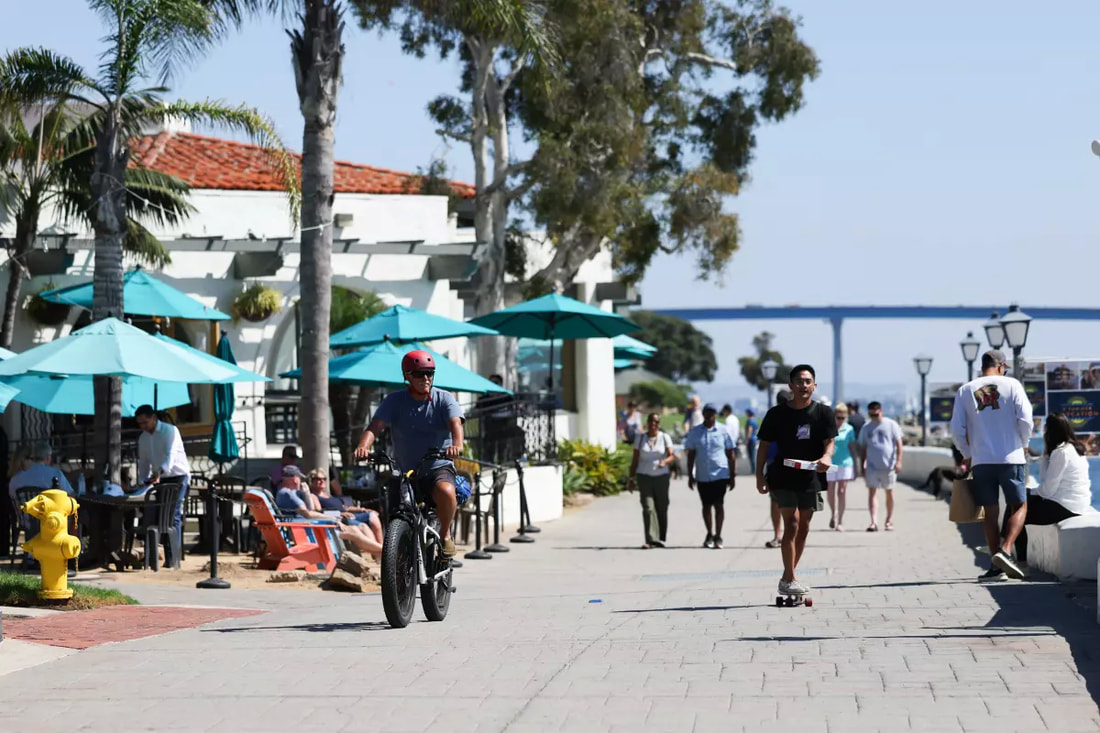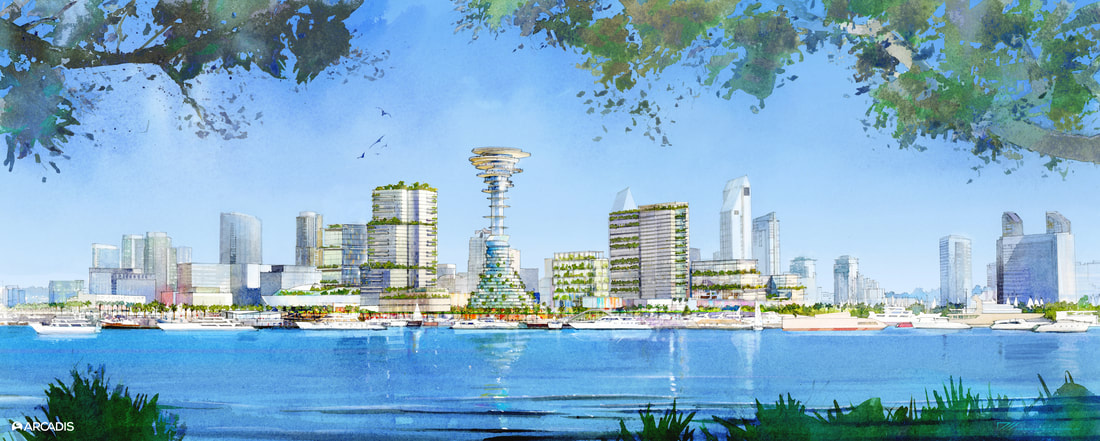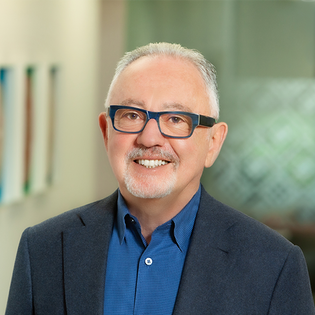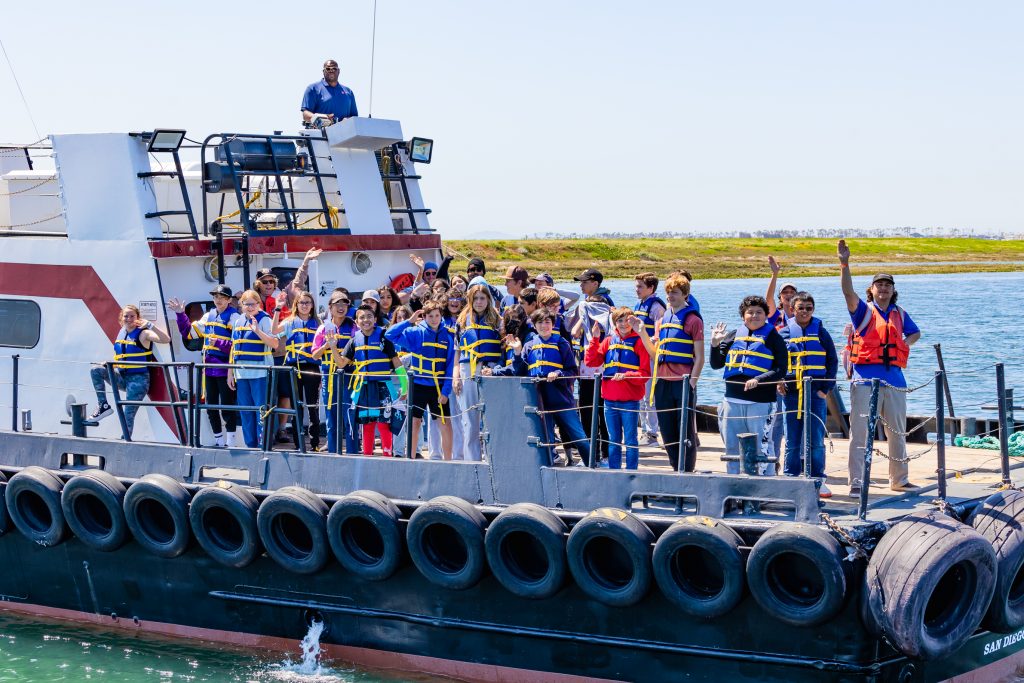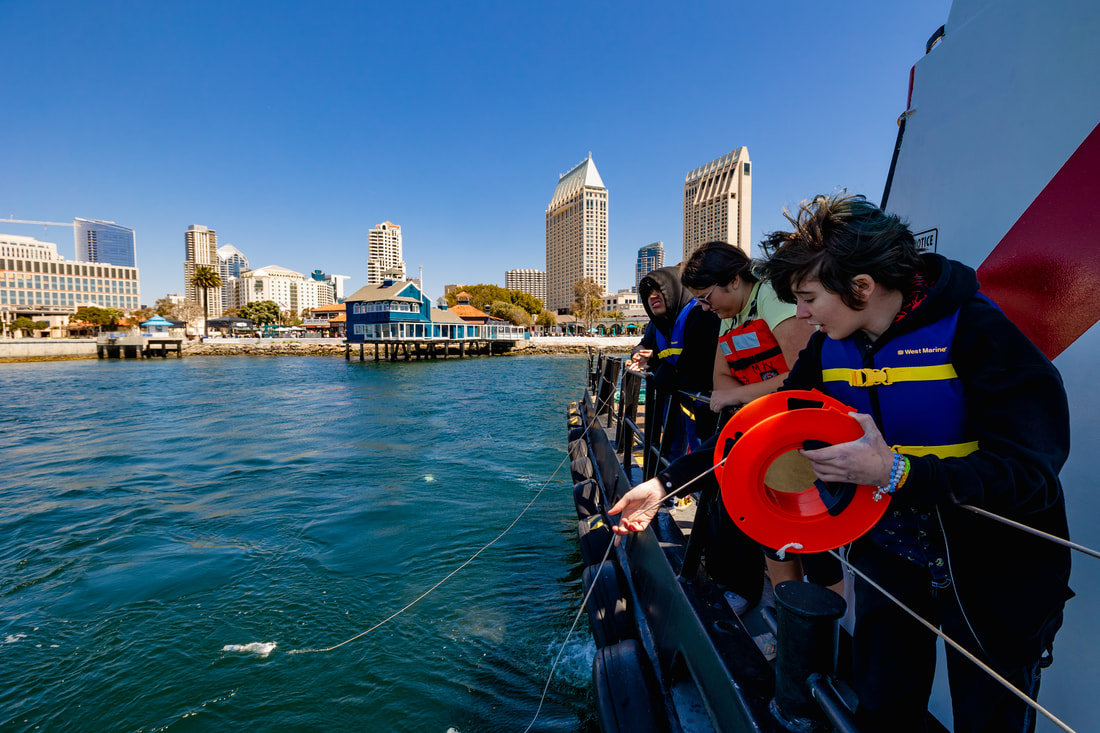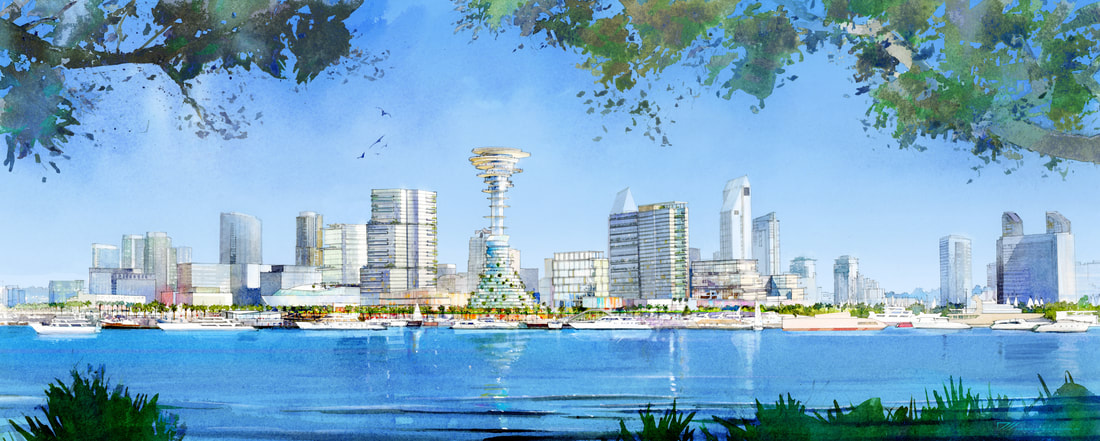|
6/11/2024 - Article by Times of San Diego
6/16/2024 - Video by FOX 5/KUSI Tony Shin Seaport San Diego Parks for All will host a free event Saturday to gather input on the future of parks and open spaces within the Central Embarcadero on the downtown waterfront. The developer, Seaport San Diego, in partnership with San Diego Coastkeeper and the San Diego County Bicycle Coalition, are sponsoring the community event from 11 a.m. to 2 p.m. at Embarcadero Marina Park North, 400 Kettner Blvd. To make it easier for families to attend, the event is set to include festival elements as well as opportunities to shape what developers plan for parks along the Embarcadero. Highlights include:
The developer of Seaport San Diego is 1HWY1, LLC, a partnership that includes Yehudi “Gaf” Gaffen, CEO, Jeff Jacobs and Jeffrey Essakow. “The opportunity to redesign the Downtown San Diego waterfront is deeply meaningful to our team. We want Seaport San Diego to be an iconic gathering place and point of pride for all San Diegans and Californians,” said Gaffen, 1HWY1’s CEO. “We invite the community to join us in this conversation and share their thoughts, helping us shape a future that expands coastal access for all and reflects the diverse voices and needs of our city.”
0 Comments
9/18/2023 - San Diego Daily Transcript Commentary by Thor Kamban Biberman and Yehudi Gaffen The Port of San Diego is seeking comments for the draft environmental impact report for the proposed Seaport San Diego redevelopment project on the bayfront. The move toward preparing a draft EIR is just the latest in a very lengthy process -- a process slowed significantly by the discovery of an earthquake fault line that forced a redesign. Last November, Port Commissioners authorized their staff to begin the environmental review process. On Sept. 14, the notice of the planned preparation of a draft EIR was issued, and public comments will be incorporated into the document. Port staff anticipates the draft EIR will be released for public review and comment in the fall of 2024. Concurrently, staff are continuing to work with Seaport San Diego developer 1HWY1 on financials and feasibility for the proposed project. After the final EIR is complete, the Port will consider its certification and the approval of a Port Master Plan Amendment (PMPA). If the Port board certifies the EIR and approves a PMPA, the amended plan would then go to the California Coastal Commission for approval. Once a PMPA is certified, 1HWY1 must also get a coastal development permit at which time Port Commissioners will also be asked to approve some form of real estate agreement with 1HWY1. The 1HWY1 team is headed by Gafcon founder Yehudi Gaffen, Jeff Jacobs, son of Qualcomm co-founder Irwin Jacobs, and Jeff Essakow of Protea Properties. In 2016, the Port selected 1HWY1 to redevelop a large portion of the Central Embarcadero, including Seaport Village, Tuna Harbor, Embarcadero Marina Park North, and Ruocco Park. 1HWY1 is proposing a mix of uses, including extensive plazas, parks and promenades; piers and marinas; hospitality, retail and restaurants; commercial fishing uses; multiple visitor attractions; an urban beach; and educational uses. The Seaport San Diego plan covers approximately 39 acres of land and 63 acres of water. Gaffen said in a prepared statement that progress continues to be made. "Our team is brimming with energy and momentum as we enter the next milestone in this process, the official start of the environmental review process for Seaport San Diego," he said. "We understand the Port's process will be thorough and will include ample opportunities for public review and feedback. "We look forward to the analysis of the many proposed improvements to public access, including a greatly expanded public promenade along the waterfront. While the release by the Port of the Notice of Preparation is one step in a technical process, it represents significant progress and demonstrates the substantial amount of resources being invested in our proposed project. We are also using this period to seek out even more participation from our community that will inform (and help develop) a Public Access Plan for the project to be studied in the Draft Environmental Impact Report. "We recently launched an outreach effort, Seaport San Diego For All, which aims to gather a diversity of voices to enhance accessibility and the public experience of the Seaport San Diego bayfront." Plans for the landside portion of the project include 10 new buildings ranging in size from two stories to 34 stories comprising approximately 2.7 million square feet of mixed-use development. Specific plan details include:
The Port is holding two public scoping meetings during the current 33-day comment period. An in-person meeting will be held Wednesday Sept. 27 at 5 p.m. at the Port of San Diego Administration Building (3165 Pacific Highway) while a virtual meeting will be held Thursday, September 28 at 5:30 p.m. via Zoom. Written comments will be accepted through 5 p.m. on Monday, Oct. 16 and should be emailed to [email protected] or mailed to: Port of San Diego, Attn: Development Services Department, 3165 Pacific Highway, San Diego 92101. Those commenting are asked to put "Seaport San Diego Redevelopment Project" in all correspondence. 9/14/2023 - The San Diego Union-Tribune Commentary by Jennifer Van Grove, Yehudi Gaffen, and Shaun Sumner The Port of San Diego has initiated a state-mandated environmental review of developer 1HWY1’s Seaport San Diego project, which proposes to demolish Seaport Village and redo surrounding areas with thousands of hotel rooms, ocean-research facilities, public attractions, and new marinas and piers. The agency’s environmental work, a requirement of the California Environmental Quality Act, officially got under way Thursday with the publication of what’s known as a notice of preparation. The 163-page document includes a preliminary evaluation of anticipated impacts to the environment, which are expected to be substantial across categories such as air quality, water quality and transportation. The notice of preparation alerts the public and other agencies to the ongoing review and solicits input on the areas the port should consider as it works to prepare a draft environmental impact report. The document’s publication comes more than 10 months after Port of San Diego commissioners agreed to launch the environmental review, and speaks to the breadth of analysis needed to understand the implications of a project proposing to redevelop 102 acres of land and water area on San Diego Bay. 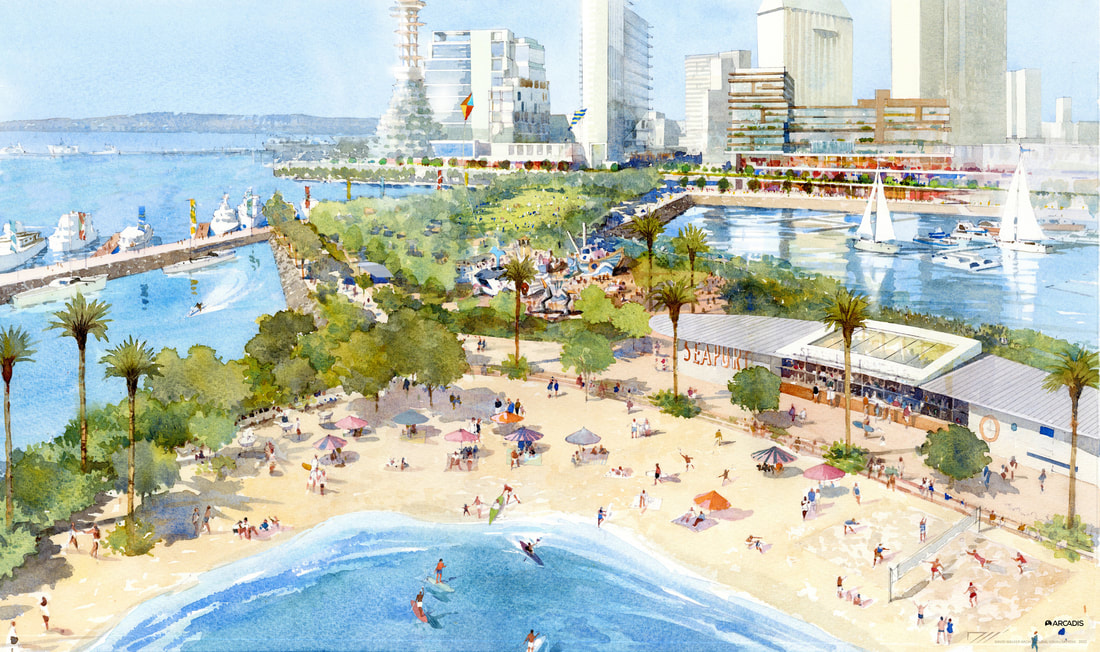 Seaport San Diego, from developer 1HWY1, is $3.8 billion plan to remake 102 acres of land and water area on San Diego Bay with 2.7 million square feet of mixed-use development, including a 500-foot observation tower. The rendering looks north from a reimagined experience, including an urban beach, on the peninsula where Embarcadero Marina Park North is today. The observation tower and other hotels contemplated in the project can be seen the background. (Courtesy, Seaport San Diego. Master Architect: CallisonRTKL Inc.; Iconic Tower: BIG; Landscape: OJB.) “The notice of preparation is a huge milestone from a processing standpoint,” said Joseph Smith, whose firm California Coastal Works is the port’s contracted project manager for the environmental review. “What we’re communicating to the public is essentially a preliminary judgment call. We’re saying that there’s a lot to this project. There are a lot of issues to be explored.” Backed in part by San Diego’s prominent Jacobs family, Seaport San Diego is a total reimagining of downtown’s Central Embarcadero, which includes Seaport Village and follows the waterfront from Embarcadero Marina Park North to the G Street Mole, just south of the USS Midway Museum. The port selected 1HWY1 — an entity headed by Yehudi “Gaf” Gaffen, Jeff “JJ” Jacobs (son of Irwin Jacobs) and Jeff Essakow — to redevelop the expansive area in November 2016 following a competitive bidding process. The project, now estimated to cost $3.8 billion, proposes 2.7 million square feet of mixed-use development, including 2,050 hotel rooms spread across seven properties, 215,000 square feet of retail and restaurant space, 220,067 square feet of office space for ocean research, 159 boat slips, 16 acres of parks and open space, and 2,250 parking spaces. The project also features a school, a commercial fishing facility, an urban beach, a large event center, an aquarium, a butterfly pavilion, a yacht club and an elevated walkway — or Green Strand — that travels the length of the site. Its centerpiece is a 500-foot observation tower and hotel located at the start of Pacific Highway. “Our team is brimming with energy and momentum as we enter the next milestone in this process, the official start of the environmental review process for Seaport San Diego. We understand the port’s process will be thorough and will include ample opportunities for public review and feedback,” said Gaffen, who runs 1HWY1. “While the release by the port of the notice of preparation is one step in a technical process, it represents significant progress and demonstrates the substantial amount of resources being invested in our proposed project.” Seaport San Diego is divided into 12 subareas — seven land blocks and five water zones — that will be analyzed in the draft environmental impact report. The report will also study three optional project additions, including a water cut feature between land blocks A and B, and an extended pier in the project’s Midway Cove Marina allowing for additional boat slips. As it stands, the project is anticipated to have a significant impact across 17 different environmental topics identified by state law, according to an initial study of impacts that will need to be analyzed in greater detail. The project is expected to be built in phases over a seven- to nine-year period. It has the potential, both during and after construction, to negatively affect scenic vistas, increase pollution and greenhouse gas emissions, disturb the bay floor and lower water oxygen levels, create more traffic congestion, increase bird strikes and cause the release of hazardous materials, among other things. In addition, the project straddles an earthquake fault and falls within a 100-year flood hazard area and tsunami hazard area. The project site is located in an area that has a high potential for liquefaction, meaning loose sand could be saturated with water and behave like liquid during an earthquake, according to the initial study. The developer is also proposing to raise the elevation of the project site by up to 3 feet in some areas with engineered fill. The strategy is meant to address anticipated sea level rise, but the elevation change could result in other environmental impacts that also need to be studied. The Port of San Diego has hired California Coastal Works and HDR Engineering to oversee the environmental review process and perform the bulk of the analysis, which includes an estimated 18 different studies and technical reports, Smith, the project manager, said. The firms are budgeted for work that could cost as much as $2.9 million, when including potential contingency costs and other factors. The developer is responsible for footing the bill. “It’s not a check-the-box exercise. ... We’re trying to be thorough and disclose as much as we possibly can,” said Shaun Sumner, who is the port’s vice president of business operations. “(The environmental impact report) discloses (impacts) to the public, and provides a mitigation, monitoring and reporting program that will allow us to implement measures that ultimately will help benefit the public.” The port expects to release a draft environmental impact report next fall and return to the board with a final document in the summer of 2025, although the timeline is tentative. Port staff will work in parallel to negotiate a lease and other business agreements with 1HWY1, Sumner said. 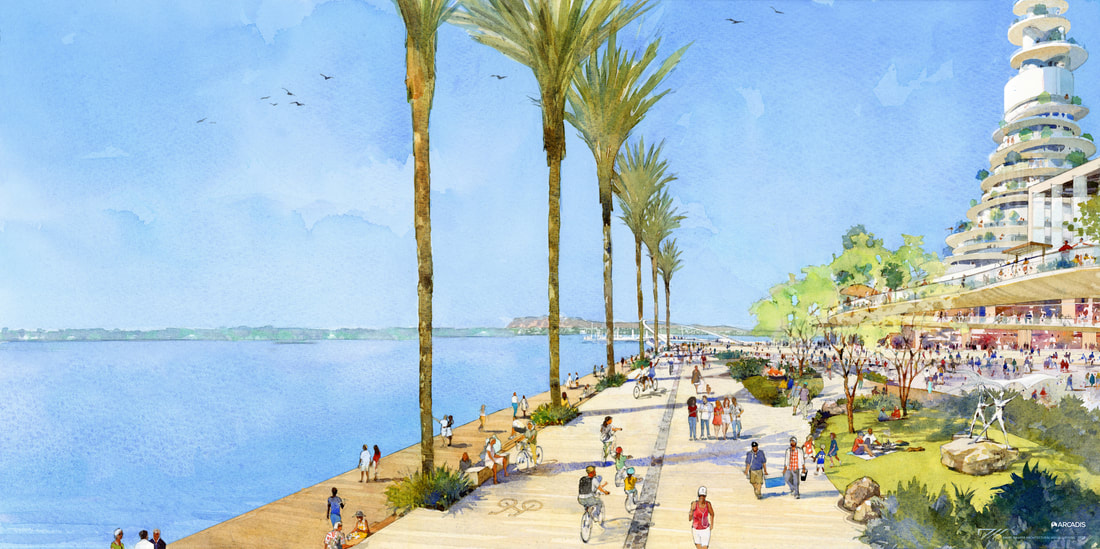 Seaport San Diego rendering is looking north with the proposed 500-foot observation tower pictured right in the background. Also pictured on the right is an elevated pedestrian walkway, known as the Green Strand, which travels the length of the site and connects to the second story of Seaport’s many waterfront buildings. (Courtesy, Seaport San Diego. Master Architect: CallisonRTKL Inc.; Iconic Tower: BIG; Landscape: OJB.) “The board can’t make a decision on a business deal until (the environmental impact review) is complete,” Sumner said.
While the port is the primary permitting agency, and thus responsible for the environmental review, the mega development may also require approval or permits from a long list of local, state and federal agencies, including the city of San Diego, California Coastal Commission, San Diego Regional Water Quality Control Board, U.S. Army Corps of Engineers and National Oceanic and Atmospheric Administration, according to the notice of preparation. The port is hosting two public meetings to collect comments on the notice of preparation. The first will be held at 5 p.m. on Sept. 27 in the training room at the Port Administration Building at 3165 Pacific Highway. A second, virtual-only meeting will take place via Zoom on Sept. 28 at 5:30 p.m. Written comments in response to the notice of preparation are due by Oct. 16. Additional information about the project, environmental review and public meetings is available at portofsandiego.org/projects/central-embarcadero.
8/7/2023 - kpbs
For Christina Griffin-Jones, consulting on accessibility for the development of Seaport San Diego feels personal.
She grew up riding the merry-go-round in Seaport Village, getting pizza with her family and feeding the seagulls against their advice. On a really good day, they’d end with ice cream. As a young adult, the seaport was near to one of her many trolley and bus transfers on the commute to her job as a hotel worker. It provided a well-lit respite — somewhere safe to sit in her uniform and find peace in San Diego’s waterfront. “In all those parts of my life — as a little kid, as a young grown up struggling to survive capitalism,” she said, “Seaport San Diego (was) a space that was able to support and hold me in those different transitions. And honoring that folks with less privilege than I have, that that might not be a reality for them.” Historically, some — especially non-white and lower-income residents — have been excluded from San Diego’s waterfront areas through policing, redlining and transportation and financial barriers. Griffin-Jones’ consulting company, Womxn’s Work, is now gathering public input to ensure everyone can experience it. “No matter where they live in San Diego, no matter how hard they have to work or how low they're paid, they deserve access to fun,” she said. Griffin-Jones was coy about the specifics of what accessibility might look like. She said she didn’t want to influence the results of the public listening sessions. Yehudi Gaffen, CEO of 1HWY1, the development company in charge of the $3.6 billion redesign, offered some clues. They are looking to diversify the pricing of attractions and hotels to make them financially accessible. The infrastructure needs to be accessible to people with disabilities and those who use wheelchairs. The bus and trolley routes need to connect those from historically excluded neighborhoods. But they’re also looking at factors that influence whether someone feels like they belong in the space, like what kind of food and shopping the vendors offer. Griffin-Jones said what police presence looks like can also affect that feeling, especially for groups disproportionately harmed by the justice system. “For us,” Gaffen said, “we will have failed if Seaport San Diego is not a comfortable place for everyone, whatever walk of life, whatever economic strata you come from, whatever color you may be.” The redevelopment plan extends to roughly 70 acres of land and water between downtown San Diego and the San Diego Bayfront. It includes Seaport Village, Santa Monica Seafood (formerly Chesapeake Fish) and surrounding areas between the Manchester Grand Hyatt and the USS Midway Museum. Embarcadero Marina Park North, Ruocco Park, and Tuna Harbor are also included. Gaffen’s team dreams of an observation tower with different activities on every level – a “mist garden” that simulates clouds; a cargo net near the top that visitors can lie out on “if you have the stomach for it;” a highly polished reflective surface intended to make visitors feel like they’re floating in the clouds. They want to curate retail stores to offer unique sustainable products, like shoes made of recycled ocean plastic that are designed and 3D printed in real-time in front of the customer. He envisions a butterfly garden, a world-class aquarium and a live auction fish market. He wants it to be a destination for both San Diegans and tourists. His challenge is ensuring that in all of these fantastical elements, there will be something for everyone — and they can access it. Gaffen said groundbreaking is “three to four years away at best.” The next listening session will be at the Chula Vista Library on Saturday, Aug. 19 from 2 to 4 p.m., with Spanish language facilitation. There will be another session at the Skyline Hills Library on Saturday, Aug. 26 from 12 to 1:30 p.m. Residents who can’t participate in the listening sessions can provide input through the online survey. Find listening sessions and survey here. Public Access Plan for Downtown Waterfront Program to Address Barriers to Coastal Access; Feedback is Sought from Residents With Lived Experience SAN DIEGO, CALIF. (July 26, 2023) – The development team for Seaport San Diego invites the community to participate in “Seaport San Diego for All,” a community outreach program happening now. Seaport San Diego is a proposed $3.6 billion redevelopment of the Downtown San Diego waterfront within the Port of San Diego. Rooted in concepts of social justice and equity, Seaport San Diego for All includes a series of listening sessions, a survey, data collection and research to inform a Public Access Plan for this transformative project. Designed and led by Womxn’s Work Consulting, the Seaport San Diego for All community outreach program will seek perspectives from people who have historically been excluded from opportunities to provide feedback on impactful projects. The goal of this effort is to understand barriers community members have faced in accessing the coast, considering factors such as racial, economic and social inequity, and how the Seaport San Diego project can be designed to reduce such barriers, create a welcoming environment, and provide equitable public access. The Public Access Plan for Seaport San Diego will address physical and mobility connections to and within the site, including access for persons with disabilities, as well as ensuring that the site is socially and economically accessible to everyone. The next listening session will take place on Saturday, August 5, 2023 from 12:00 – 1:30 p.m. at the Pacific Beach/Taylor Branch Library at 4275 Cass St, San Diego, CA 92109. For details on this event and other ways to participate in Seaport San Diego for All, please visit seaportsandiego.com. The developer of Seaport San Diego is 1HWY1, LLC, a partnership that includes Yehudi “Gaf” Gaffen, CEO, Jeff Jacobs and Jeffrey Essakow. “The opportunity to redesign the Downtown San Diego waterfront is deeply meaningful to our team – and it comes with great responsibility to ensure access for all. We want Seaport San Diego to be an iconic gathering place and point of pride for all San Diegans and Californians,” said Gaffen, 1HWY1’s CEO. “In collaboration with Womxn’s Work Consulting, we are engaging with our communities in a dialogue about how the waterfront can be a more inviting and inclusive place for future generations. Seaport San Diego for All will help us identify public access improvements that will benefit everyone.” Christina Griffin-Jones is co-founder and Vice President of Womxn’s Work Consulting, a San Diego-based firm that helps nonprofit organizations, government agencies and companies build meaningful and equitable relationships with Black, Indigenous, and People of Color (BIPOC) communities. “It’s a fact that historically, many people have faced unfair barriers to accessing the California coastline. It’s time to make inclusivity a priority as we redevelop San Diego’s waterfront for future generations – and Seaport San Diego is setting a new standard for equitable coastal access,” said Griffin-Jones, Vice President of Womxn’s Work Consulting. “Seaport San Diego for All is an inclusive outreach effort that intentionally seeks perspectives from people who may have been excluded from visiting our waterfront, beaches and coastal areas. By hearing their lived experiences, we can plan for a Seaport San Diego that is welcoming to all.” 1HWY1 was selected by the Port of San Diego Board of Port Commissioners for its Seaport San Diego concept after a competitive process in 2016 in which developers submitted ideas for the land and water area known as the Central Embarcadero. After extensive community outreach and several design refinements, the Port of San Diego Board voted to advance the project into the California Environmental Quality Act review process in 2022. After the environmental review is complete, the project will be considered for approval. ABOUT SEAPORT SAN DIEGO:
Seaport San Diego is an award-winning, comprehensive plan and proposal to revitalize our downtown San Diego Bayfront and engage, delight and sustain San Diego residents and visitors throughout the next century. This bold vision will increase access to our waterfront and showcase the natural beauty and unique character of our city. The plan enhances the San Diego experience with a diverse assortment of new landmarks, facilities, recreational areas and enriching cultural amenities. Seaport San Diego was named the 2022 ICSC GOLD Award recipient for Evolving Innovation and Aspiration in the New Developments category. For more information, please visit seaportsandiego.com. Opinion: How Scripps, SDUSD and Seaport San Diego will boost waterfront educational opportunities5/3/2023 Students from Pacific Beach Middle School gather plankton samples for analysis in San Diego Bay as part of the Seaport Climate Science Program, a partnership between Birch Aquarium at Scripps Institution of Oceanography at UC San Diego, San Diego Unified School District and Seaport San Diego. (Photo courtesy of Seaport Climate Science Program.) 5/2/2023 - SD Union Tribune
Commentary by Richard Barrera, Yehudi Gaffen, Harry Helling Barrera is a San Diego Unified School District trustee, and lives in South Park. Gaffen is CEO of 1HWY1, the Seaport San Diego developer, and lives in Downtown San Diego. Helling is executive director at Birch Aquarium at Scripps Institution of Oceanography at UC San Diego, and lives in Dana Point. San Diego Bay is our region’s most precious resource, and it connects us to a shared culture. From the homeland of Indigenous nations and rich marine wildlife to a center for fish processing and aerospace factories, it boasts a rich history. Today it’s studded with shipyards, cargo terminals and the Naval Base. It’s known for much more than industry alone, the waterfront is a gathering place — a treasured destination for picnics, sunsets, public art walks and community celebrations. It may come as a surprise that many San Diego-area youth — our next generation — tell us they have never been to the waterfront that plays such an important part in our collective experience. Coastal access is an equity issue. A 2016 UCLA study, one of the only comprehensive reports on equity in coastal access, stated that 62 percent of Californians cite access to the coast as a problem — with historically disadvantaged communities and lower-income households being less likely to visit the coast. A new partnership between Birch Aquarium at Scripps Institution of Oceanography at UC San Diego, San Diego Unified School District and Seaport San Diego demonstrates how institutions can come together to connect more students to the Bay and the opportunities it holds. The Seaport Climate Science Program is a shining example of a public-private partnership that benefits youth in a unique and meaningful way while contributing to our understanding of best practices in climate science education. Now in its second year, the pilot program has served more than 1,000 students from San Diego Unified and Sweetwater Union High School districts. The idea for the Seaport Climate Science Program arose from a transformative development proposal within the Port of San Diego’s waterfront. In 2016, 1HWY1 was selected by the Port to propose redevelopment of the Central Embarcadero, which includes Seaport Village and surrounding areas — with coastal access a priority. The concept, Seaport San Diego, is an ambitious project that would include an observation tower; a Blue Campus with ocean-related uses such as blue tech, educational and outreach programs; hotel properties; retail and restaurant space; an entertainment venue and a fish-processing facility as well as 16 acres of parks and recreational and open space. Seaport San Diego will physically connect people to the bay with new piers and marinas, a new living shoreline area and urban beach. The design is currently going through the Port’s environmental review process. One of the most exciting components of Seaport San Diego is the proposed Blue Campus, featuring a combination of education and entertainment. The Blue Campus is envisioned as a leading center for ocean education and outreach, open to youth and adult learners from throughout California. As 1HWY1 created this vision, the development team sought guidance from the region’s leading experts in climate science and education, and the Seaport Climate Science Program was launched as a partnership to test these ideas. Both Birch Aquarium at Scripps, which is proposed to operate a Learning Center within the Blue Campus, and San Diego Unified are key partners in this pilot program which engages middle school students in on-the-water field trips. Connecting students to the natural world through place-based field trips where students can authentically engage in science activities provides an opportunity for significant impact to student learning beyond the classroom. Students are energized and inspired to learn how researchers evaluate the health of our ocean. They delight in using echo sounder technology to monitor fish populations and special tools to gather plankton samples, and bringing their data collected on the field trip back to the classroom for further analysis continues the learning beyond the field trip. Dozens of students shared that the program was the first time they had ever set foot on a boat or visited a waterfront park. This program contributes to our understanding of best practices in climate science education and will inform the proposed Learning Center design. We believe it’s a model for other public-private partnerships. San Diego Unified students tell us they value the opportunity to visit the coast. Some students have expressed interest in careers as scientists, researchers and educators, and others mention plans to return to the waterfront in the future. Will future generations feel connected to the history and significance of San Diego Bay? Will they thrive and be inspired by climate science to explore STEM careers? Most importantly, will they feel a sense of belonging and pride when they visit our waterfront? With an inclusive approach to coastal access, we believe the answer to all of these questions is yes. Birch Aquarium at Scripps | Photo: Jordann Tomasek
4/7/2023 - Hispanos Unidos NATIONAL CITY – Hoy, los líderes locales tuvieron la oportunidad exclusiva de recorrer el Programa de Ciencias Climáticas de Seaport. El programa único en su tipo es una asociación entre Birch Aquarium en Scripps Institution of Oceanography en UC San Diego, el Distrito Escolar Unificado de San Diego y Seaport San Diego. El programa piloto se estableció como una prueba de concepto para informar el diseño de la futura instalación permanente en Seaport San Diego. Durante el recorrido, el vicepresidente del Puerto de San Diego, Sandy Naranjo, el síndico unificado de San Diego, Richard Barrera, y otros líderes aprendieron más sobre el Programa de Ciencias del Clima de Seaport, que involucra a los estudiantes de secundaria en excursiones prácticas centradas en la ciencia del clima. Aproximadamente 70 estudiantes de séptimo grado de la Escuela Intermedia Pacific Beach participaron en la gira, rotando entre las estaciones de aprendizaje de STEM a bordo de un barco equipado para investigación que partió desde Pepper Park en National City. “Seaport San Diego es una propuesta para revitalizar una parte importante del frente de la bahía de San Diego de manera cuidadosa y audaz para el próximo siglo, y el Centro de aprendizaje es la piedra angular de nuestra visión para conectar a los estudiantes y adultos de todo California con el océano de manera significativa. ”, dijo el desarrollador de Seaport San Diego, Yehudi “Gaf” Gaffen, director ejecutivo de 1HWY1. “Nos sentimos honrados de contar con la asociación del Distrito Escolar Unificado de San Diego y el Acuario Birch en Scripps mientras nos embarcamos en el diseño de nuestro Centro de Aprendizaje. Estoy encantado de ver cómo el Programa de Ciencias Climáticas de Seaport ya está inspirando a las mentes jóvenes y espero con ansias a tener un centro permanente para el aprendizaje centrado en el océano en Seaport San Diego. Guiados por educadores de Birch Aquarium en Scripps, los estudiantes diseccionaron estómagos de peces lanceta y examinaron el contenido en busca de pistas sobre el ecosistema oceánico. Usaron tecnología de ecosonda para monitorear las poblaciones de peces, recolectaron muestras de agua del océano para analizarlas y examinaron el plancton bajo un microscopio, todas actividades que se llevan a cabo como parte de los viajes de campo del Programa de Ciencias Climáticas de Seaport. El Programa de Ciencias Climáticas de Seaport “permite que los niños de todo el distrito puedan venir y explorar el océano”, dijo Collin Scott, de 13 años, estudiante de Pacific Beach Middle School. “Algunos niños sueñan con ser científicos y creo que esto definitivamente podría ayudarlos. Tienes la oportunidad de aprender sobre el medio ambiente, los peces y los animales, la temperatura del agua, todo lo que hay aquí en la bahía”. Los planes de lecciones para el Programa de Ciencias Climáticas de Seaport se basan en la investigación y la educación que se llevan a cabo en Birch Aquarium. “La asociación entre Birch Aquarium en Scripps, San Diego Unified y Seaport San Diego nos permite presentar a una nueva generación de estudiantes la investigación oceánica y los métodos mediante los cuales los investigadores evalúan la salud de nuestros océanos”, dijo Margaret Leinen, directora de Scripps. Institución de Oceanografía y Vicecanciller de Ciencias Marinas de UC San Diego. “El Programa de Ciencias Climáticas de Seaport es un brillante ejemplo de una asociación público-privada que beneficia a los jóvenes de una manera única y significativa al mismo tiempo que contribuye a nuestra comprensión de las mejores prácticas en la educación de las ciencias climáticas”. 4/7/2023 - CBS News 8 Video Educators from Birch Aquarium and San Diego Unified Lead Pilot Program To Inform Design of Future Seaport Learning Center FOR IMMEDIATE RELEASE MEDIA CONTACT: Tanya Castaneda | 619.764.9874 | [email protected] With the backdrop of the Downtown San Diego site for the proposed Seaport San Diego project, students from Pacific Beach Middle School gather plankton samples for analysis. Photo Credit: Seaport Climate Science Program NATIONAL CITY, Calif. (April 6, 2023) – Today local leaders had an exclusive opportunity to tour the Seaport Climate Science Program. The one-of-a-kind program is a partnership between Birch Aquarium at Scripps Institution of Oceanography at UC San Diego, San Diego Unified School District and Seaport San Diego. The pilot program was established as a proof-of-concept to inform the design of the future permanent facility at Seaport San Diego. During the tour, Port of San Diego Vice Chair Sandy Naranjo, San Diego Unified Trustee Richard Barrera and other leaders learned more about the Seaport Climate Science Program, which engages middle school students in hands-on, climate science-focused field trips. Approximately 70 seventh-grade students from Pacific Beach Middle School participated in the tour, rotating among STEM learning stations aboard a research-equipped vessel that launched from Pepper Park in National City. Local leaders had a special opportunity to learn about the Seaport Climate Science Program on April 6, 2023, observing students as they rotated among hands-on STEM learning stations in Pepper Park, National City. “Seaport San Diego is a proposal to revitalize an important part of the San Diego Bayfront thoughtfully and boldly for the next century, and the Learning Center is a cornerstone of our vision for connecting students and adult learners throughout California with the ocean in a meaningful way,” said Seaport San Diego developer Yehudi “Gaf” Gaffen, CEO of 1HWY1. “We are honored to have the partnership of San Diego Unified School District and Birch Aquarium at Scripps as we embark on the design of our Learning Center. I’m delighted to see how the Seaport Climate Science Program is already inspiring young minds and look forward to having a permanent center for ocean-centered learning at Seaport San Diego.” A conceptual rendering of Seaport San Diego. Credit: Seaport San Diego/Master architect CallisonRTKL Inc. Guided by educators from Birch Aquarium at Scripps, the students dissected lancetfish stomachs and examined the contents for clues about the ocean ecosystem. They used echosounder technology to monitor fish populations, gathered ocean water samples for testing and examined plankton under a microscope — all activities that take place as part of Seaport Climate Science Program field trips.
The Seaport Climate Science Program “is allowing kids from all over the district to be able to come and explore the ocean,” said Pacific Beach Middle School student Collin Scott, 13. “Some kids have dreams about being scientists and I think this could definitely help them. You get to learn about the environment, fish and animals, water temperature – all the stuff out here in the Bay.” The lesson plans for the Seaport Climate Science Program are based on the research and education being conducted at Birch Aquarium. “The partnership between the Birch Aquarium at Scripps, San Diego Unified and Seaport San Diego allows us to introduce a new generation of students to ocean research and the methods by which researchers evaluate the health of our oceans,” said Margaret Leinen, Director of Scripps Institution of Oceanography and Vice Chancellor for Marine Sciences at UC San Diego. “The Seaport Climate Science Program is a shining example of a public-private partnership that benefits youth in a unique and meaningful way while contributing to our understanding of best practices in climate science education.” The Seaport Climate Science Program is aligned with curriculum standards for STEM education. “It is increasingly important that our students are equipped to become good stewards of the environment. Through this collaboration, students will have the opportunity to thrive as they engage in hands-on, climate and marine-science focused learning experiences,” said San Diego Unified School District Superintendent Dr. Lamont Jackson. “This is so important in San Diego because the ocean is connected to our environment, our lives, our culture, and is an essential resource for current and future jobs.” The Seaport Climate Science Program, now in its second year, will have served more than 1,000 students from San Diego Unified and Sweetwater Union High School District by the end of April 2023. About the Seaport Climate Science Program The Seaport Climate Science Program is a pilot program that demonstrates the partnership between Birch Aquarium at Scripps Institution of Oceanography at UC San Diego, San Diego Unified School District and Seaport San Diego. The program is a proof-of-concept for the future Seaport San Diego Learning Center within the Port of San Diego, which will be a resource for San Diego Unified and other schools throughout California, and will be operated by Birch Aquarium at Scripps. The Seaport Climate Science Program seeks to engage middle school students in hands-on, climate science-focused field trip experiences in a way that informs the future permanent facility at Seaport San Diego. Students experience curriculum-aligned, STEM learning onboard a research-equipped vessel operated by Pacific Maritime. Between 2022 and 2023, approximately 1,000 students will have participated in the pilot program. A rendering of the Seaport San Diego project by 1HWY1.
11/9/2022 - Times of San Diego By Chris Jennewein Port of San Diego commissioners have authorized staff to begin the environmental review process for the Seaport San Diego project proposed by 1HWY1 for redevelopment of the central embarcadero. 1HWY1 is proposing a mixed-use development that includes parks, plazas, piers, walkways, beaches, nature trails, hotels, an event center, an aquarium, office space, an observation tower, restaurants and retail space. The potential redevelopment area includes Seaport Village and surrounding areas between the Manchester Grand Hyatt and USS Midway. Embarcadero Marina Park North, Ruocco Park, and Tuna Harbor are also included. “This site is unlike any other along our San Diego Bay and advancing the proposed Seaport San Diego project to environmental review is a good step forward,” said Port Chairman Dan Malcolm on Tuesday. “The central embarcadero has tremendous potential to become San Diego’s signature waterfront destination." “We are overjoyed at the opportunity to enter a new phase of the approval process and grateful to our supporters who have been with us every step of the way,” said Yehudi Gaffen, CEO of 1HWY1. “Seaport San Diego is designed to keep the best of what we have and reflect the community’s wants and needs, with greater public access to the waterfront for everyone.” In late 2016, the Board selected the 1HWY1 development team following a competitive solicitation and due diligence process. Since then, 1HWY1’s proposed Seaport San Diego project has evolved in response to board, public, and stakeholder feedback. The environmental review process that now begins will 24 months or longer and include public feedback. |
MEDIA INQUIRIESArchives |

